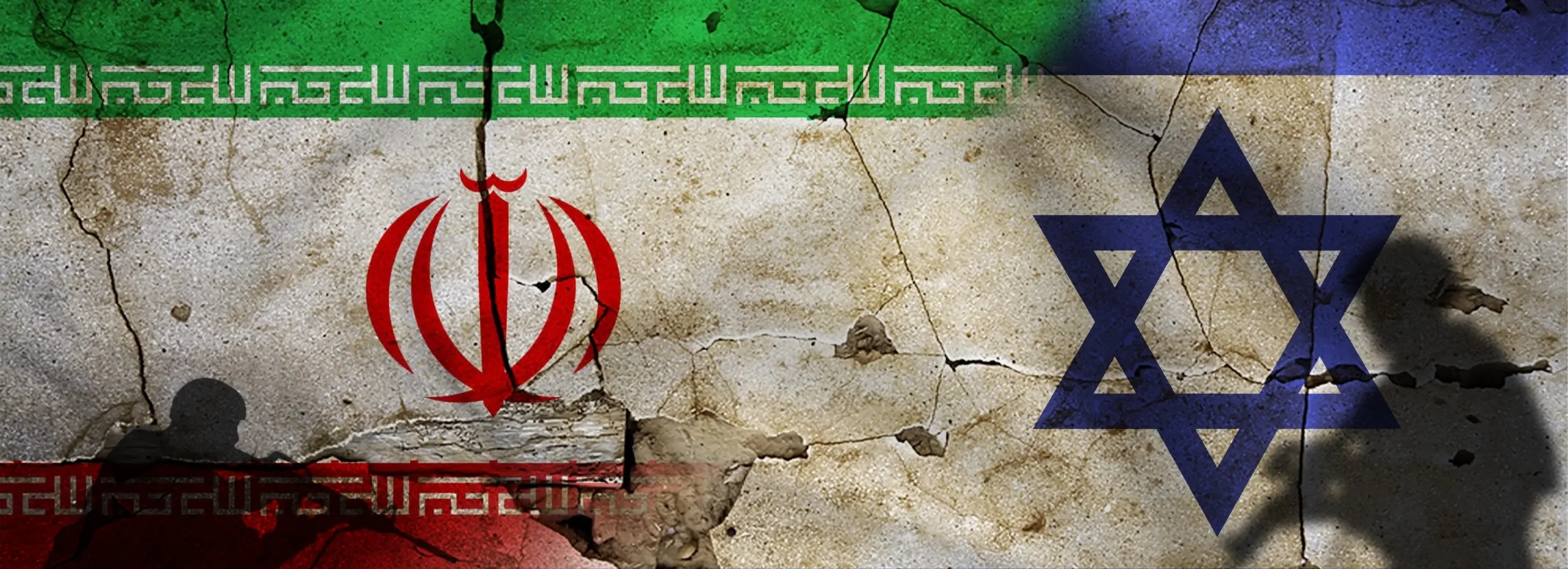Recent decisions by U.S. President Donald Trump cutting aid to foreign countries and dismantling the U.S. Agency for International Development (USAID) have sparked global backlash. While the impact of cutting aid is substantial, the broader significance of this move cannot be overlooked. It reflects a deeper shift in the Trump administration’s foreign policy strategy. But what are the implications for the U.S. and its adversaries?
A New Order?
For decades, U.S. foreign policy has leveraged aid as a tool of power against its rivals. The idea of USAID traces back to the early Cold War, when the U.S. and the Soviet Union competed for influence over developing and postcolonial nations. In his 1949 inaugural address, President Harry S. Truman outlined four priorities for U.S. foreign policy, the last of which was “a bold new program for making the benefits of our scientific advances and industrial progress available for the improvement and growth of underdeveloped areas.” Trump’s perspective diverges from that of his predecessors. His administration views aid as a mere gift from the U.S. to other nations, overlooking the fact that the U.S. itself is one of the greatest beneficiaries of its foreign aid diplomacy.
The idea of slashing and redirecting foreign aid is not new for Trump. In his first term’s budget proposal to Congress in 2018, he suggested cutting aid by a third. Later that year, while addressing the U.N. General Assembly, he justified this approach, stating, “Moving forward, we are only going to give foreign aid to those who respect us and, frankly, are our friends.” Fortunately for both developing nations and U.S. interests, Congress blocked these drastic cuts. Today, however, such restraints are no longer in place.
Trump’s new approach reflects a shift to the whole of American foreign policy. The shrinking, and, in some cases, termination, of foreign aid is just a small piece of a larger picture that defines the Trump administration’s worldview. This administration no longer prioritises soft power diplomacy, instead viewing military and economic strength as the sole means of enforcing the American vision on the world. In this context, USAID is not an isolated case but part of a broader shift in U.S. foreign policy, which includes for instance withdrawing from the Paris Agreement, the World Health Organisation, rejecting what Trump calls “free riders” in NATO, and refusing to shoulder the security costs of European states, historically, the U.S.’s closest allies. This new direction marks a significant departure from decades of U.S. internationalism in favour of a more isolationist stance.
Trump does not view American hegemony in the traditional sense upheld by international relations theorists, who argue that hard and soft power are complementary. Instead, he sees hard power as sufficient. Meanwhile, other global actors, such as China, are advancing their own hegemonic influence through a predominantly soft power-based approach.
One of the key issues is that policies advocating aid termination often gain popular support due to widely held misconceptions. A major misunderstanding concerns the composition of U.S. assistance and the diverse rationales behind it. “Foreign aid” is an umbrella term that encompasses various categories, including bilateral development aid, military assistance, humanitarian aid, strategic aid, non-military security aid (such as counterterrorism), and multilateral development aid. This misconception leaves many Americans unaware of the tangible benefits that different forms of aid bring to the U.S. itself, fostering resentment toward foreign assistance. Additionally, a significant number of Americans believe that the U.S. spends far more on foreign aid than it actually does. A 2019 opinion poll showed that Americans estimate foreign aid to constitute around 25% of the federal budget and suggest it should be about 10%. In reality, foreign assistance for the 2019 fiscal year amounted to $39.2 billion, less than 1% of the federal budget, and has not exceeded 1.5% of the federal budget since 2000.
A revealing glimpse into the Trump 2.0 foreign policy agenda came from U.S. Secretary of State Marco Rubio in a recent hour-long interview. Rubio described unipolarity as merely an “anomaly” and argued that multipolarity is the global norm, citing China as one of the emerging poles in the new world order. Whether Rubio genuinely believes this or is merely aligning with Trump’s worldview, his statement is significant, not only in declaring the era of U.S. unipolarity over but also in framing multipolarity as a return to normalcy.
This aligns with the broader pattern of straining relationships with traditional allies, such as Canada and the EU, leaving the U.S. increasingly isolated in its disputes. This challenges the conventional notion of a unipolar system, where the U.S. serves as a global hegemon supported by other Western powers. Instead, this shift paves the way for emerging multipolarity, where mid-level global powers, Canada and the EU constitute a text book definition, act as balancing forces among competing global poles.
Surprisingly, There Are Winners
The U.S. cannot afford to revert to its old isolationist tendencies without sacrificing significant leverage and control over certain aid-receiving states. For example, after Haiti’s government, under President Jean-Bertrand Aristide, attempted to raise the minimum wage and reduce foreign control over key industries, U.S. aid was cut, and economic pressure was exerted to push for regime change. Aristide was eventually ousted in 2004 under circumstances that many argue were shaped by foreign intervention.
Throughout Latin America, USAID has faced accusations of funding groups that oppose leftist governments, effectively undermining sovereign decision-making. In many cases, financial support has been funnelled to opposition groups under the pretext of “democracy promotion,” fuelling tensions between the U.S. and local governments. This underscores the reality that development aid is not merely humanitarian assistance, it is a political instrument. By scaling back foreign aid, the current U.S. administration risks losing a key tool of influence.
Who stands to gain from this shift? The vacuum left by the United States is unlikely to remain unfilled, and China appears to be the most likely candidate to step in. This aligns with Marco Rubio’s remarks about a multipolar world, where other powers are given the space to assert their influence. For Beijing, this presents an opportunity to secure geopolitical concessions and strengthen its leverage over states, a role that was once largely dominated by the U.S.
For instance, the White House has swiftly moved to terminate or suspend U.S.-backed projects in Bangladesh. Following the overthrow of Sheikh Hasina’s government last summer, the country has been grappling with institutional collapse, widespread corruption, and a lack of oversight, leaving its infrastructure and governance in disarray. With Bangladesh on the brink of economic collapse, these funding cuts will inevitably push it to seek alternative sources of financial support.
As a large nation in a geopolitically strategic location, Bangladesh has actively pursued ties with the U.S. and could have been a key partner in counterbalancing China’s regional influence. However, by disengaging, Washington is essentially relinquishing its role, leaving Beijing in a prime position to deepen its involvement. China has already invested heavily in Bangladesh through its Belt and Road Initiative and has provided direct support to the caretaker government. Unsurprisingly, in response to the U.S. aid freeze, Bangladesh has turned to China, actively working to strengthen bilateral relations, an outcome that could undermine U.S. strategic interests in the region.
While it may be an oversimplification to assume that China will immediately replace the U.S. as a dominant aid provider, the shift is becoming increasingly feasible. Aid is not just about financial assistance; it also requires experience and strategic planning. However, China is now in a much stronger position to expand its influence than ever before.
At the same time, recipient nations will likely see their bargaining power diminish significantly. With U.S. foreign aid withdrawn, countries that once benefited from the competition between two superpowers may now have little choice but to accept whatever is offered. This could lead to a deeper form of aid-driven dependency, as nations lose the flexibility, they once had to negotiate better terms. In the past, the presence of multiple donors allowed recipient states some room for manoeuvre, but with fewer options available, their autonomy in shaping aid agreements will be increasingly constrained.
Accordingly, Trump’s decisions should not be viewed in isolation; rather, they are interconnected, forming part of a broader shift in U.S. foreign policy. This transformation became particularly evident when Rubio characterised unipolarity as an anomaly, signalling a departure from traditional U.S. dominance. While this shift is touted as advantageous for the U.S., it ultimately undermines American interests and harms aid recipients, leaving only U.S. adversaries to benefit.
References
Council on Foreign Relations, “Bangladesh Could Turn to China as Trump Pulls Aid to the Country,” Council on Foreign Relations, https://www.cfr.org/article/bangladesh-could-turn-china-trump-pulls-aid-country
Council on Foreign Relations, “The Cost of the Trump Administration’s Foreign Aid Debacle,” Council on Foreign Relations, https://www.cfr.org/article/cost-trump-administrations-foreign-aid-debacle
Carnegie Endowment for International Peace, “USAID and Trump’s Foreign Aid Policy: Why It Matters,” Carnegie Endowment for International Peace, February 2025, https://carnegieendowment.org/emissary/2025/02/usaid-trump-foreign-aid-policy-why?lang=en
Drew DeSilver, “What the Data Says About U.S. Foreign Aid,” Pew Research Center, February 6, 2025, https://www.pewresearch.org/short-reads/2025/02/06/what-the-data-says-about-us-foreign-aid/
Kamilah Morain-Koyje, “Beyond Aid: Why It’s Time to Move on from USAID,” LinkedIn Pulse, January 2024, https://www.linkedin.com/pulse/beyond-aid-why-its-time-move-usaid-kamilah-morain-koyje/
















Comments